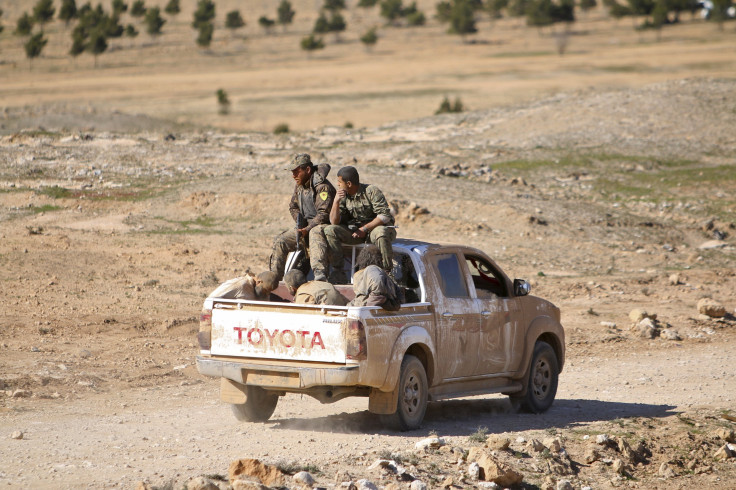ISIS Using Deadly Robotics: US Army Worried About Islamic State Remote-Controlled Weapons

The United States Army is concerned about remote-controlled weapons in the hands of the so-called Islamic State group, also known as ISIS, and other insurgent groups, the Washington Post reported this week.
"As conflicts in Iraq, Syria and Libya continue, battlefields in the region have turned into technological incubators for groups looking to find new and improved ways to kill one another," wrote the paper. That's led to remote-operated weapons, including rifles and machine guns, according to an Army report.
The report looked at 21 case studies of such weapons used by militant groups like the Islamic State group, the Free Syrian Army and Jabhat Al Nusra. The vast majority of the weapons — 20 — were recovered from Iraq and Syria, while one was from 2011 in Libya.
"It is evident by these cases — and others not listed — that terrorists and insurgents are increasingly turning to teleoperated weaponry to support and augment their forces in battle," the report reads. The Army report also expressed concern about advances in sophistication of the weapons.
Insurgent groups such as ISIS are "increasingly turning" to remote-controlled weaponry, Army report sayshttps://t.co/nsD3FXfBZS
— The Washington Post (@washingtonpost) August 30, 2016
"In many cases, if not all, they are using expert technicians and engineers to fashion robotics that will function as remote controlled weapons," the report states. "It is troublesome to wonder how well they would do if they had better materials — potentially making something that could actually match the weaponry developed in the United States. As the conflict escalates, the likelihood of more of these types of weapons being employed is highly probable."
If the automated rifles weren't worrisome enough, the Army also has to deal with the threat of miniature drones, according to a recent report from the Week. Forces in Iraq, Syria and rebels in Ukraine have increasingly employed the use of the small remote-operated aircraft and the Army has updated its manual accordingly, the report stated.
The "Techniques for Combined Arms for Air Defense" manual said that the two types of small drones — one group weighing less than 20 pounds, the other less than 55 pounds — are "the greatest challenges for Army forces," according to the Week. The small size of the drone reportedly allows "the ability to meet reconnaissance, surveillance, and information collection requirements without being noticed."
© Copyright IBTimes 2025. All rights reserved.






















